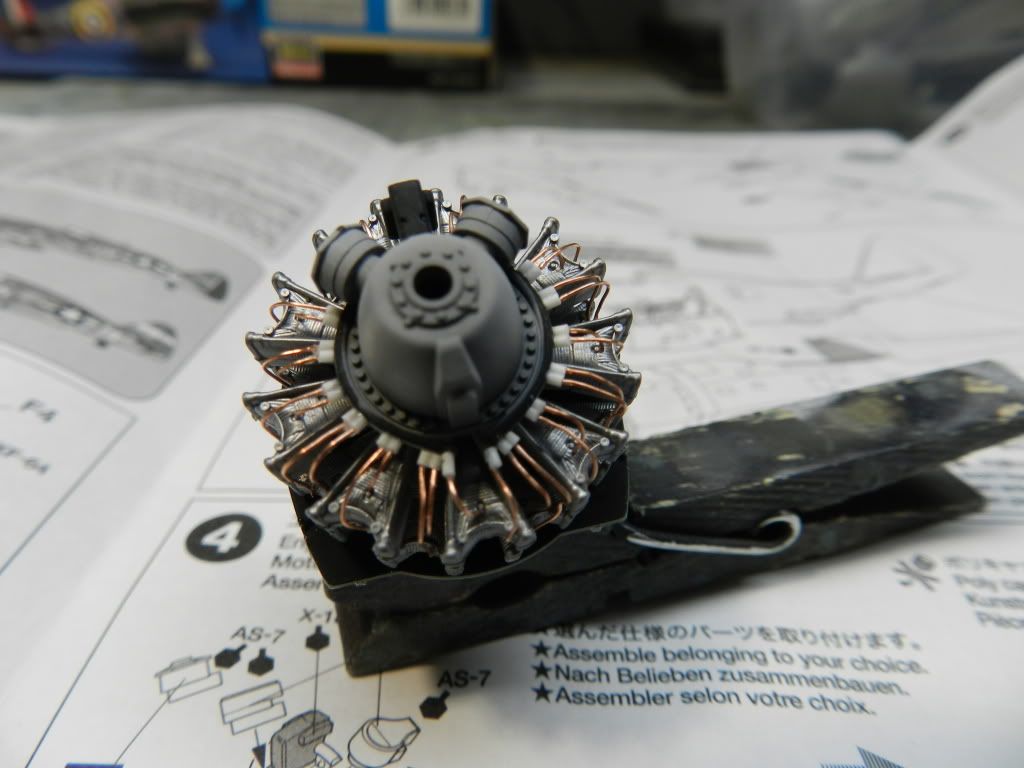Hello all, I have some time to kill before I start a myriad of Group Build subjects, so I figured I would do an easy interim build, the 1/48 Academy P-47N, which I bought cheap off E-bay a few years back. Although it’s no Tamiya Jug (which is the best plastic kit in any scale IMO), I’ve read good things about it, unlike the Pro Modeller version which is reportedly good, but very finicky. With that, I’m eager to add an N to my collection. As I perused the kit, I felt some areas could use some improvement, specifically the spartan cockpit and lousy gun blast tubes. I found a True Details N cockpit at my LHS for the Mini-Craft kit. I was aware of the Lindberg kit, but I didn’t know Mini-Craft made an N too. I decided to get it and I would shoe horn it into this kit. Before embarking on this kit, I decided to get Quickboost guns, Ultracast tires, then an Eduard PE set for the cockpit while I was at it (I don’t like True Details’ instrument panels, especially this one).
I’ve decided on “Lil Meatie’s Meat Chopper”, a 507th FG Jug flown by Lt. Oscar Perdomo out of Le Shima. Perdomo was the last “ace in a day” of WWII and subsequently the last ace of WWII, which I found interesting. I coincidentally found a Super Scale sheet with his markings at my LHS, so it was unnecessary to look on line for it.
I started with the True Details cockpit. Its not their best but its decent. The detail just seemed somewhat soft or non existent in areas. I suppose in my head I always compare everything to the Tamiya Jug cockpit, which is a work of art. Anyways, I sprayed all parts XF-1 Flat Black then used Tamiya XF-26 Deep Green with a dash of the black to simulate Republic Dark Dull Green. I then hand painted the boxes and such XF-69 NATO black then the map box and stick boot in XF-49 Khaki to add interest. Seatbelts were done in a mix of XF-57 Buff and XF-2 Flat White. The Instrument panel is Eduard PE attached to the kit part, which is one of the best I’ve seen so far. The cockpit was drybrushed with Floquil Old Silver (Enamel) to simulate wear and after a Testor’s clear gloss coat, It was washed with “The Detailer” wash.
Getting the cockpit into the fuselage was somewhat challenging. I just couldn’t get it to fit right, then I remembered it was designed for the Mini-Craft kit…duh. After some shaving here and there, mostly on the sidewalls, I got the halves closed around the pit.
I then turned my attention to the wings. The Academy Kit, for some reason, comes with the HVAR rocket attachment points molded to the lower wing. The 507th FG were primarily assigned to B-29 escort, so its unlikely their Jugs were equip with rockets I then commenced to hacking these off. This was easier than I expected, by means of an Exacto blade and sandpaper. I did have to rescribe a couple panel lines but it was nothing to be concerned about.
Preliminary fit of the wings to the fuselage did not reveal any foreseeable issues. As a precaution, I still may attach the upper wing to the wing root first, then add the lower pieces when dry…we’ll see. I like my models with access doors and hatches closed (sans the canopy of course), therefore, I glued the gun access panels into the wing. These fit well. I used Evergreen shims from the inside to prevent glue seepage all while ensuring they fit flush.
Soon I will be sanding seams and attaching wings. Thanks for looking and stay tuned…
Joe










 I found the detail in the waste gate/exhaust area (in front of the tailwheel) on this kit lacking area, so I decided to scratchbuilt up this area a bit with some Evergreen strip, while using the Tamiya kit instructions as a visual reference. Small rivet or bolt detail was then added with a pin vise and an old airbrush needle. Its not perfect, but its certainly better than before.
I found the detail in the waste gate/exhaust area (in front of the tailwheel) on this kit lacking area, so I decided to scratchbuilt up this area a bit with some Evergreen strip, while using the Tamiya kit instructions as a visual reference. Small rivet or bolt detail was then added with a pin vise and an old airbrush needle. Its not perfect, but its certainly better than before.
















